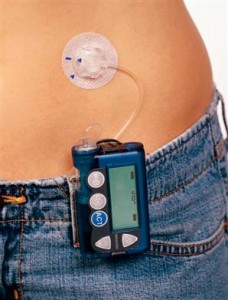Many women have a form of diabetes that occurs only in pregnancy. It is called gestational diabetes, and it can cause problems for both mother and baby. Doctors routinely check for gestational diabetes in women who have risk factors for it.
There are three main risk factors for gestational diabetes. Women who have had gestational diabetes when they were pregnant before are more likely to have it again. Any woman who has had a baby larger than 8.8 pounds will probably be checked during later pregnancies. Finally, a woman younger than 25 who was already overweight before she became pregnant is at risk.
Unless you have shown signs of high blood sugar beforehand, the test will usually be done at around the 24th to the 28th week of pregnancy. It is called the glucose challenge screening test or, for more accurate results, an oral glucose tolerance test will be done.
There is very little preparation necessary for the glucose challenge screening test. For the glucose challenge screening test, there is no fasting required and it can be done at any time throughout the day. You just drink 50 grams of glucose in liquid and give a blood sample after an hour. A glucose tolerance test is in order if your blood sugar level is 140 mg/dl or higher at that time.
To prepare for it, mostly you will follow your regular habits as long as they are healthy ones. You should eat a balanced diet in the days before the test. 150 to 200 grams of carbohydrate are recommended per day.
There are a few things that need to be taken care of before the test. The doctor needs to check all of your medications. In certain cases, some medications will be discontinued before the test if they might affect the results.
If you are taking the oral glucose tolerance test, you need to avoid strenuous exercise for eight hours before the test. In fact, for this period, you also should not eat, drink, or smoke. This will prepare you for an oral glucose tolerance test with accurate results.
You will have to give four blood samples within the course of the test. The first is taken upon arrival; because you have been fasting for eight hours, it is the baseline fasting blood sugar level. A normal level for this test would be less than 95 mg/dl.
Next, you have to drink 100 grams of glucose in liquid. The concoction is so sweet that many people have trouble taking it. Some people may have an upset stomach or even vomit. If they do vomit, they will have to take the test on another day.
The three additional blood samples will be taken at one-hour intervals. At one hour the blood sugar reading should be less than 180 mg/dl. After two hours, the blood sugar level should have dropped to less than 155 mg/dl. After three hours, the blood sugar level should be less than 140 mg/dl.
Your doctor will take the information from the glucose tolerance test and determine how you need to be treated during your pregnancy. An accurate test can save the life of the baby, and preserve the health of the mother.

 It is routine for doctors to suggest exercise for their pregnant patients. When those patients have diabetes too, exercise is even more important. The doctor will make the final determination as to what exercise is appropriate. However, it is good to explore the options ahead of time.
It is routine for doctors to suggest exercise for their pregnant patients. When those patients have diabetes too, exercise is even more important. The doctor will make the final determination as to what exercise is appropriate. However, it is good to explore the options ahead of time. Childhood obesity is one of the most troubling modern problems. It is now known that children of women who had diabetes during
Childhood obesity is one of the most troubling modern problems. It is now known that children of women who had diabetes during  The first use of
The first use of  When you find out that your child has either Type 1 or Type 2 Diabetes you might feel a tangle of many emotions. You may be shocked, sad, and even angry at yourself. Realizing that you are not the cause of your child’s Diabetes is the first step. Educating yourself about it will help you be prepared when you talk with your child. This will also help your child manage the disease.
When you find out that your child has either Type 1 or Type 2 Diabetes you might feel a tangle of many emotions. You may be shocked, sad, and even angry at yourself. Realizing that you are not the cause of your child’s Diabetes is the first step. Educating yourself about it will help you be prepared when you talk with your child. This will also help your child manage the disease.